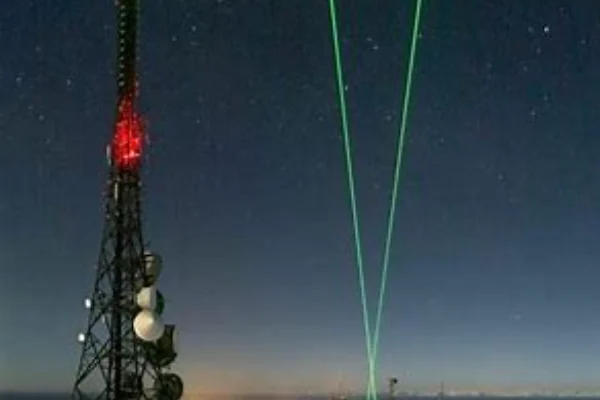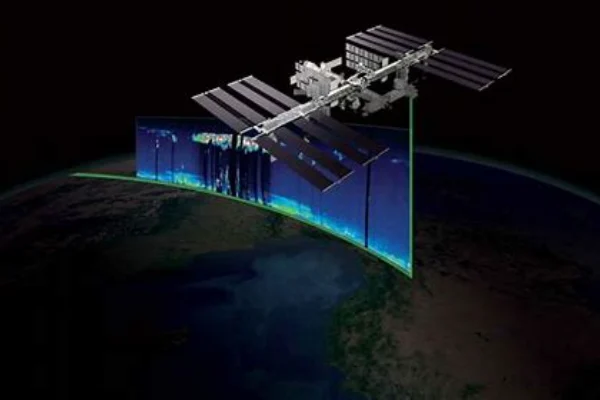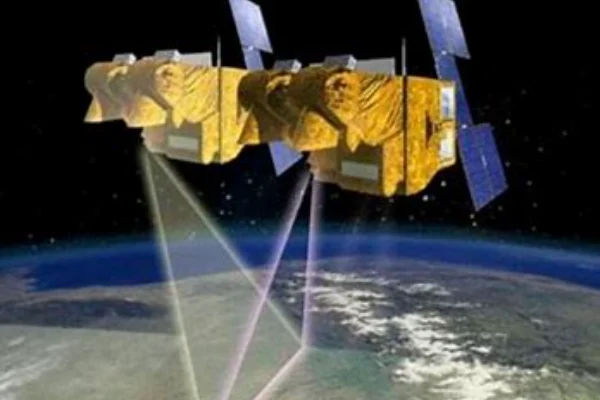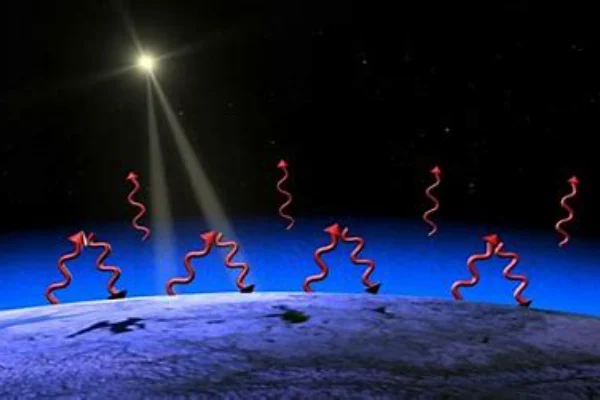Introduction
In the realm of optical technology, Er, Yb:YAB lasers have emerged as a pivotal tool, especially in the fields of remote sensing and LIDAR systems. These lasers, characterized by their unique emission characteristics, have proven to be exceptionally well-suited for atmospheric measurements. In this article, we delve deep into the intricacies of Er, Yb:YAB lasers, their properties, and their significance in remote sensing and LIDAR applications.

Understanding Er, Yb:YAB Lasers
Er, Yb:YAB lasers have carved a niche for themselves in the world of advanced optical technologies. Their unique composition and structure, combined with their distinct emission characteristics, make them a preferred choice for a range of applications, especially in the domain of atmospheric measurements.
Diving deeper into the composition, the crystalline structure of Er, Yb:YAB is not just a random assembly of elements. Erbium and Ytterbium, both rare earth elements, are intricately doped into the Yttrium Aluminum Borate matrix. This doping process is meticulously carried out to ensure that the resultant laser possesses the desired emission properties. Erbium, in particular, plays a pivotal role in determining the laser’s emission spectrum. When excited, it releases photons in the infrared range, a characteristic that is central to the laser’s effectiveness in remote sensing applications.
The infrared range, where the emission spectrum of Er, Yb:YAB lasers predominantly lies, is a segment of the electromagnetic spectrum that is invisible to the naked eye. However, its significance in scientific and technological applications is paramount. Infrared emissions have the innate ability to penetrate through a variety of atmospheric conditions. Whether it’s a cloudy day, a foggy morning, or even during a dust storm, the emissions from these lasers can travel unobstructed. This is a crucial feature, especially when precise and uninterrupted data collection is imperative.
Furthermore, the ability of these lasers to penetrate atmospheric obstructions is not just about reaching a target. The quality of the data or the image captured is also superior. For instance, in remote sensing applications, where the objective is to capture high-resolution images of the Earth’s surface, the clarity and detail achieved with Er, Yb:YAB lasers are unparalleled. This is particularly beneficial when monitoring changes in the environment, assessing deforestation, or even in urban planning.
In addition to remote sensing, these lasers have also found applications in communication systems. The same infrared emissions that allow them to penetrate atmospheric obstructions also enable them to carry data over long distances without significant loss. This makes them an attractive choice for setting up communication links in challenging terrains or over extended ranges.
Another noteworthy aspect of Er, Yb:YAB lasers is their efficiency. The doping process ensures that the energy conversion rate, from electrical energy to light energy, is optimized. This means that these lasers can operate for extended periods without significant energy losses, making them both energy-efficient and cost-effective in the long run.
In conclusion, the unique composition and emission characteristics of Er, Yb:YAB lasers make them a technological marvel in the realm of optical systems. Whether it’s for capturing detailed images of the Earth’s surface, setting up long-distance communication links, or any other application that requires precise and uninterrupted data collection, these lasers stand out as the gold standard. Their contribution to science and technology is immense, and as advancements continue, their potential applications are only set to increase.

Role in Remote Sensing
The realm of remote sensing has been significantly enhanced with the introduction of Er, Yb:YAB lasers. Their capabilities extend far beyond traditional methods, offering unparalleled advantages in data collection and imaging.
One of the most notable benefits of using these lasers in remote sensing is their ability to penetrate various atmospheric conditions. Traditional remote sensing tools often face challenges when confronted with obstructions like fog, mist, or dense cloud cover. However, the infrared emission from Er, Yb:YAB lasers can effortlessly penetrate these barriers. This ensures that data collection remains consistent and reliable, even when the atmospheric conditions are not favorable. For researchers and scientists, this means that they can gather data without interruptions, ensuring continuity in their studies and projects.
Moreover, the quality of data collected using these lasers is of a superior grade. The infrared emissions, combined with the laser’s unique emission characteristics, allow for the capture of high-resolution images. These images are not just clearer but also provide a depth of detail that is often missing in images captured using traditional methods. For instance, in environmental studies, where understanding minute changes is crucial, these lasers can detect subtle shifts in terrains, minor alterations in vegetation, or even slight variations in water bodies. This level of detail is invaluable for studies that aim to understand the impact of climate change, urbanization, or other environmental factors.
Furthermore, the ability to produce high-resolution images also plays a pivotal role in identifying specific elements or compounds on the Earth’s surface. For geologists, archaeologists, and even urban planners, this means they can pinpoint locations of minerals, ancient relics, or assess the structural integrity of urban landscapes with precision. The clarity provided by Er, Yb:YAB lasers ensures that every detail, no matter how minute, is captured and analyzed.
In the broader spectrum of remote sensing applications, from satellite imaging to aerial surveys, the role of Er, Yb:YAB lasers is becoming increasingly indispensable. Their ability to provide consistent, high-quality data, irrespective of atmospheric challenges, positions them as a tool of choice for professionals across various domains. As technology continues to evolve, the potential applications and benefits of these lasers in remote sensing are set to expand, further solidifying their position as a cornerstone in the field.

Significance in LIDAR Systems
LIDAR systems, a revolutionary technology in the realm of topographical mapping and atmospheric studies, have greatly benefited from the integration of Er, Yb:YAB lasers. These lasers have not only enhanced the capabilities of LIDAR systems but have also expanded their range of applications.
The primary function of LIDAR is distance measurement. By emitting a laser towards a target and then measuring the time it takes for the reflection to return, LIDAR systems can accurately determine distances. The precision of this measurement is crucial, especially in applications like topographical mapping where even minor inaccuracies can lead to significant discrepancies. The infrared emissions from Er, Yb:YAB lasers are particularly suited for this purpose.
Unlike other lasers, their emissions are less affected by atmospheric interferences. This ensures that the laser reflections are sharp and clear, leading to more accurate distance measurements. Whether it’s mapping rugged terrains, dense forests, or urban landscapes, the accuracy provided by these lasers ensures that LIDAR systems can produce detailed and reliable maps.
Beyond mere distance measurement, LIDAR systems are also used for atmospheric profiling. This involves creating a detailed profile of the atmosphere, capturing data related to weather patterns, pollution levels, humidity, and other atmospheric conditions. The infrared emissions from Er, Yb:YAB lasers are especially effective for this purpose. Their ability to penetrate through atmospheric obstructions allows them to capture detailed data from various atmospheric layers. For meteorologists and environmental scientists, this means they can get a clearer picture of weather patterns, track the spread of pollutants, or even study the effects of climate change with greater precision.
Furthermore, the data captured by LIDAR systems equipped with Er, Yb:YAB lasers is not just detailed but also comprehensive. This comprehensive data set provides a holistic view of the environment, making it easier for researchers and scientists to draw correlations, identify patterns, and make informed decisions. Whether it’s predicting weather changes, planning urban development, or studying the impact of human activities on the environment, the data provided by these lasers ensures that decisions are based on accurate and comprehensive information.
In essence, the integration of Er, Yb:YAB lasers has significantly enhanced the capabilities of LIDAR systems. Their unique properties, combined with the advanced technology of LIDAR, promise a future where our understanding of the world around us is clearer, more detailed, and more accurate.

Emission Characteristics and Atmospheric Measurement
The emission characteristics of Er, Yb:YAB lasers, particularly their infrared emissions, play a pivotal role in atmospheric measurements. These emissions have distinct interactions with various atmospheric components, making them invaluable for such studies. For instance, as different gases in the atmosphere absorb and reflect infrared light uniquely, analyzing this reflected light can reveal the concentration of specific gases. Moreover, the way these emissions interact with atmospheric gases can also offer insights into temperature and pressure variations. Such data is indispensable for meteorological research, aiding in the accurate prediction of weather patterns and understanding atmospheric dynamics.

Conclusion
Er, Yb:YAB lasers have revolutionized the fields of remote sensing and LIDAR systems. Their unique emission characteristics make them exceptionally well-suited for atmospheric measurements, providing accurate and detailed data even in challenging conditions. As technology continues to advance, the role of these lasers in environmental studies and atmospheric research will undoubtedly become even more significant.
FAQs
- What does Er, Yb:YAB stand for?
- Er, Yb:YAB stands for Erbium, Ytterbium: Yttrium Aluminum Borate.
- Why are Er, Yb:YAB lasers preferred for atmospheric measurements?
- Their infrared emission spectrum allows them to penetrate atmospheric obstructions effectively, making them ideal for accurate data collection.
- How do Er, Yb:YAB lasers contribute to LIDAR systems?
- They provide accurate distance measurements and enable detailed atmospheric profiling, essential for LIDAR applications.
- Can these lasers detect specific gases in the atmosphere?
- Yes, by analyzing the reflected infrared light, it’s possible to determine the concentration of specific gases.
- Are Er, Yb:YAB lasers used in any other applications apart from remote sensing and LIDAR?
- While their primary applications are in remote sensing and LIDAR, they are also used in various other optical and research applications due to their unique properties.

Frank
Frank graduated from the University of Shanghai for Science and Technology, majoring in optics. As a technical engineer at Crylink Company, he deeply understands crystal materials and laser components.
Related Video(s) with this Article
Related Product(s) with this Article
Related Application(s) with this Article
